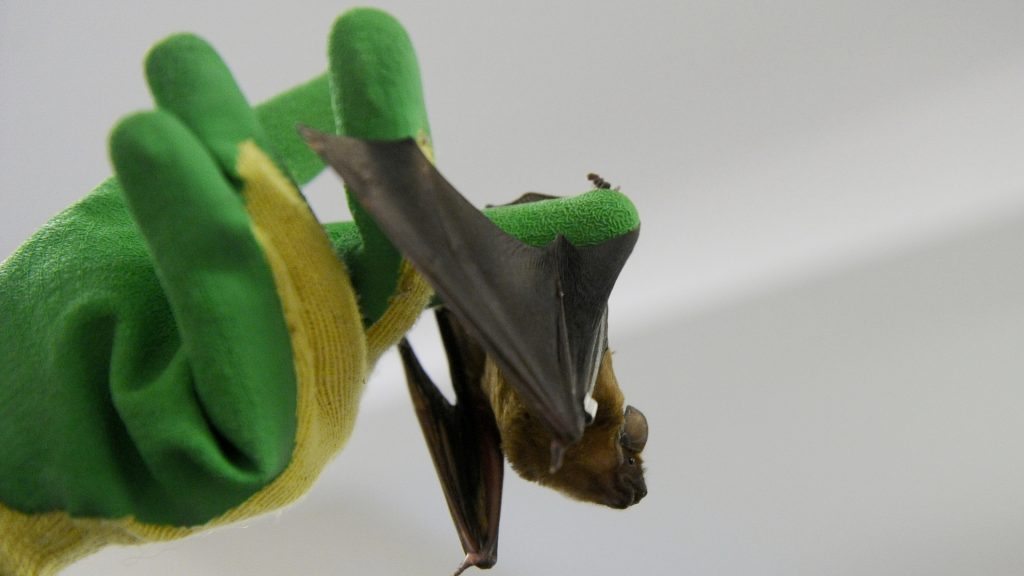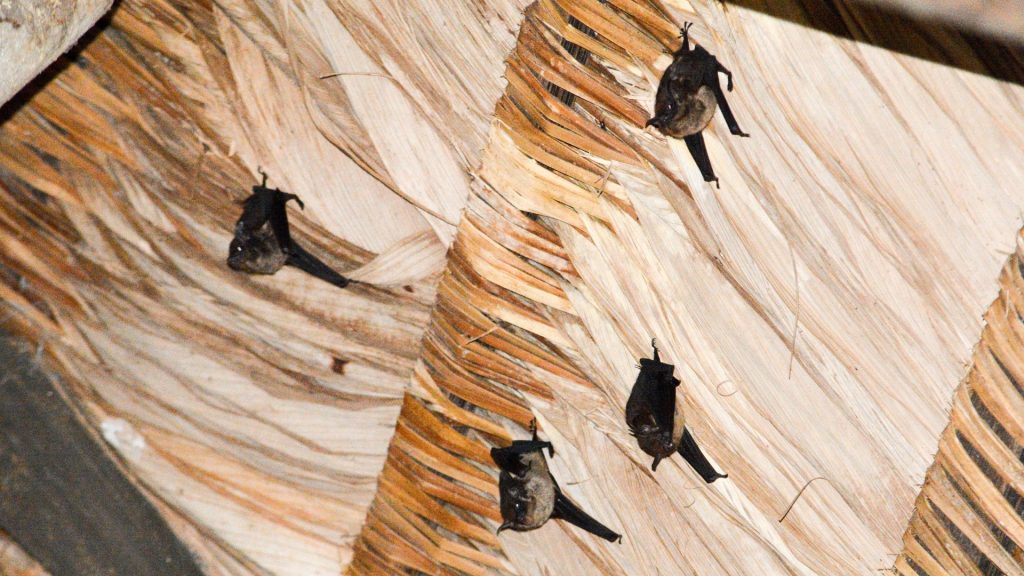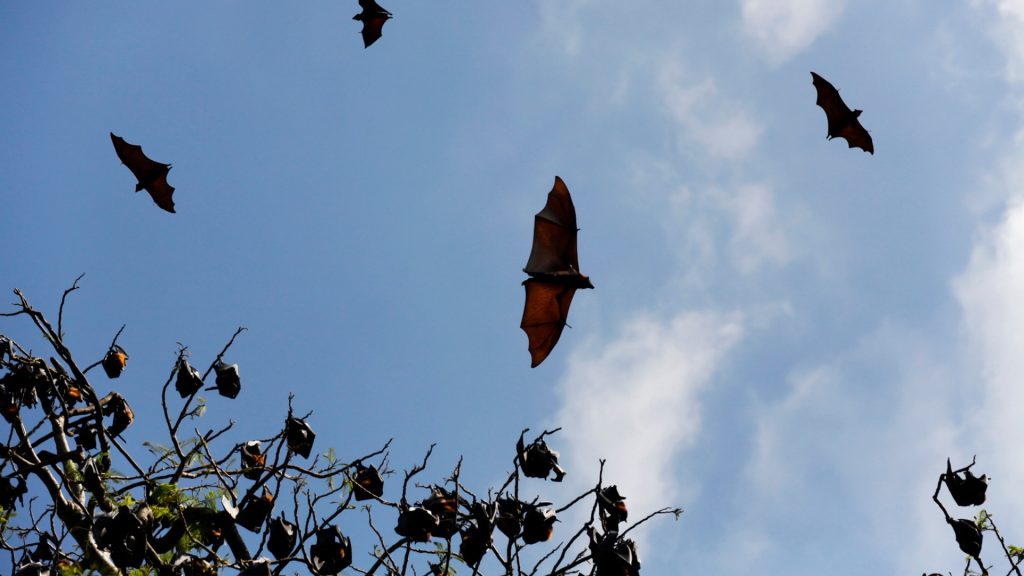A bat infestation in your house or premises means more than just their noisy pings and clicks. Bat guano corrodes wood and other building materials. They can also put you at risk of some serious respiratory diseases. So, how should you eliminate these nuisance-causing nocturnal creatures without killing them?
How to get rid of bats in your house and premises without killing them? To eliminate bats without killing them, you should first identify their entry and exit points then seal them all. After this, clean the area thoroughly to remove bat guano. Additionally, depending on the infested area, you can install strong lighting or raise the temperatures to keep the bats off.
If you’ve been struggling to get bats out of your premises without killing them, you’re in the right place. Here you’ll learn why bats keep coming to your house, what the law says about them as well as some tips and tricks on how to get rid of them. Read on!
Why Do Bats Keep Coming Into Your House?
Here are some reasons why bats keep coming to your house:
- Food: Bats may land in your house in their search for food; they feed mainly on insects.
- Pups season: As young birds learn how to fly, they get excited about it and end up flying aimlessly without knowing where they are headed and may land in your house.
- Colony size: Bats may come into your premises to seek shelter if their colony outgrows a small space outdoors.
- Weather: If the weather outside isn’t friendly, say it has been raining for days on end, bats may wander into your house as they search for a safer, warmer shelter.
Are Bats Dangerous to Humans?

The most dangerous thing about bats is their guano (poop), which can carry diseases. Bats can also transmit rabies via bites or scratches, so you should never handle or touch a bat, especially one which seems ill or injured. They are harmless if left alone and kept safely away from your property.
Is Bat Poop Dangerous?
Bat poop, known as guano, is dangerous and toxic to humans because it supports the growth of Histoplasma capsulatum fungus. If humans inhale spores from this fungus, they can contract a respiratory disease known as Histoplasmosis that can cause serious respiratory issues and death in extreme cases.
Are Bats Protected by Law?
Bats are protected by law in most parts of the world. This includes their place of residence, mainly mines, and caves, so it’s illegal to kill bats or destroy their habitats deliberately.
In December 2020, a South London building firm that destroyed a nesting bat colony got hit with a hefty £600,000 ($830,000) fine.
Reasons Why You Should Not Kill Bats
- It’s against the federal laws.
- Bats are vulnerable to extinction. Most bat species give birth to a single pup annually; therefore, killing them puts them at a higher risk of extinction.
- They play an important role by feeding on mosquitoes and other insects, thus keeping the bugs at bay.
How Long Do Bats Live?
Most bats live for approximately 20 years, but there have been six species documented to be more than 30 years old. There was a bat species from Siberia that set a record in 2016 for living for 41 years.
A 2019 study found that bats have DNA repair mechanisms that allow them to live over four times as long as most similarly-sized mammals.
How Many Species of Bats Are There?
There are nearly over 1400 species of bats that are known in the world. These bats are found in different parts of the globe and come in varying sizes and shapes.
The Kitti’s hog-nosed bat weighs just two grams and has a 6-7 in (15-18 cm) wingspan. The largest, the Giant Golden-Crowned Flying Fox, weighs over 3 pounds (1.5 kg) and has a 66 in (1.67 m) wingspan.
How Do Bats Get In the House?

These bats can get into your house through:
- Chimneys
- Cracks on the walls
- Open windows
- Vents
- Cracks or openings on the roof
- Attics, Barns, and sheds
- Siding
- Fascia boards, etc.
How to Get Rid of Bats: Step by Step Guide
If you are dealing with unwanted bats, you want them gone as soon as possible. Unfortunately, getting rid of bats will take time and involve multiple steps. By following the instructions below, you can get rid of your bat problem and keep your bat squatters from returning to your home.
How to Get Rid of Bats in Attic and Attic Vent?
To get rid of bats in the attic and attic vent, here’s what you should do:
- You need to inspect your attic and attic vent to determine the state of things. Check whether there are baby bats in the colony.
- Do a dusk watch. This involves watching over your hose at dusk to see the bats’ exit points from the attic and probably also determine how many they are.
- Get rid of the bats. The best way to get rid of them without killing them is by exclusion. To exclude them, you allow them to fly out and not back in. You have to seal all the possible entry points except for one or two common entry/exit points. Surprisingly, bats can fit in very tiny gaps or cracks as small as 3/8 inches, so you should seal all cracks within the attic or attic vent.
- Install exclusion devices at the entry/exit that you left unsealed. The exclusion devices can be bat cones, bat netting, or simple meshes that create a one-way direction. They should allow any bats still hiding in the attic to get out at night but not back in. Leave the exclusion device intact for about three nights and monitor the happenings. Ensure that bats can get out of the attic, and there should be no new entrants.
- Remove the exclusion device. Once you’re sure that all bats have vacated your attic, remove the exclusion device and seal the last entry/exit point. However, before removing the exclusion material, monitor the attic for one more night to ensure no more bats are still coming out of it.
- Do a thorough cleaning. After getting rid of all the bats, clean the attic and the attic vent thoroughly to remove the guano and other bat remnants. If you feel that you cannot clean the toxic guano on your own, you can hire cleaning experts or professionals with bat removal experience.

How to Get Rid of Bats in Chimney?
To get rid of bats in your chimney, you can do the following steps:
- Inspect inside your chimney to identify the size of the colony.
- Conduct a dusk watch to determine the bats’ exit points.
- Once they have left the chimney, seal all the points to block re-entry except for one or two standard entry and exit spots.
- Install an exclusion device on the common entry/exit point.
- Monitor the situation for about three nights until you’re sure no more bats are getting out of your chimney.
- Remove the exclusion device, seal the remaining points, and also cap the flu.
- Clean the chimney area to remove bat guano and other dirt.
How to Get Rid of Bats Outside Your House?
To get rid of bats outside your house, you can do the following:
- Identify and eliminate their natural roosting spots. This includes dead trees or piles of wood.
- Remove standing water. If it’s a fish pond or birdbath, consider covering it with a mesh or netting to keep bats off.
- If bats come to your premises for food, consider controlling insects around your yard. Additionally, you can remove night-blooming plants from your yard because they attract nocturnal insects, which in turn attract bats.
How to Keep Bats Away: Tips and Guide
Now that your former bat roommates have been safely moved on, here are some things you can do to make sure they don’t come back. To a bat seeking shelter, your outbuildings look like the best cave in town. Here’s how to make your real estate less desirable to house hunting bats.
How to Keep Bats Out of the Attic?
To keep bats out of the attic, follow these tips:
- Seal all the cracks or openings.
- Use a natural bat deterrent.
- Install a bat decoy close to your attic.
- Use mothballs.
- Install lighting.
- Scare them away with sound.
- Install mirrors.
How to Keep Bats Out of Your Garage?
To keep bats out of your garage, here are a few helpful tips:
- Block all their entry points.
- Install bright light in your garage.
- Play with temperatures. Bats don’t like high temperatures.
How to Keep Bats Away From the Porch?
To keep bats away from your porch, consider the following tips:
- Find their main roosting spot on the porch and remove it.
- Install strong porch lights.
- Use essential oils. Bats hate cinnamon and mint scents.
- Set up decoy bat houses.
How to Keep Bats Away From Hummingbird Feeders?
To keep bats away from your hummingbird feeders, here are a couple of tips:
- Take your hummingbird feeder in at dusk.
- If you decide to leave the hummingbird feeder outside, cover it up with netting to keep off the uninvited guests, the bats.
Do Bats Bite Humans and Pets?
Bats can bite humans and pets as a form of defense when provoked, though they’re generally not fond of biting. Since these mammals are a rabies vector species, you should be cautious about provoking them. With a few South American exceptions, bats don’t suck your blood by night.
Leave bats alone, and they will happily return the favor.
What Happens if a Bat Bites You?
If a bat bites you that has rabies, you are at risk of contracting the deadly virus. Thus, anytime you come into contact with a bat’s infectious material such as saliva or the brain matter (if killed), you should immediately wash the contact areas with soap and water and seek medical attention.
What Does a Bat Bite Look Like?
Bats have overly sharp teeth, and as a result, they may not leave predominant marks after a bite.
A bat bite can look like a pinprick if you are keen enough, though. If you are bitten by a bat, you need to seek medical treatment immediately. Rabies can be treated with vaccines. But once you see the symptoms, the disease has a near 100% mortality rate.
Bat Bite Treatment
Any person who has a bite, scratch, or mucous membrane contact with a bat should get Rabies Postexposure Prophylaxis (PEP). This consists of doses of human rabies immune globulin (HRIG) and rabies vaccine given over 14 days. Out of America’s 19 naturally acquired human rabies cases from 1997-2006, 17 were associated with bats.
Bat Repellent | Deterrent
The best way to avoid the hassle of removing bats is to keep them out in the first place. There are a few things you can do that will make your attic and outbuildings as unappealing as possible to bats that are looking for a place to roost. They love enclosed dark spaces with tight entryways, so you need to provide them with an incentive to stay away from yours.
Bat Repellent Spray
Bat repellent spray, such as this Shot-Gun Repels-All Animal Repellent , is sprayed on bats’ entry points, roosting spots, and hollow spaces within the premises to deter bats. It’s made up of all-natural ingredients. When you use it, it is safe for both people and pets.
- STRONG REPELLER - This unique blend of ingredients causes mild...
- ANIMALS AFFECTED - Our product will repel species of squirrel,...
- DEFEND YOUR GARDEN AND HOME - Apply around homes, gardens,...
- BIODEGRADABLE - Repels-All is biodegradable and will not harm...
- Pack of 2(Pack may vary)
If you cannot find a bat repellent spray, most dog or cat repellents will also work against bats.
Related: Do Electronic Rodent Repellents Work on Bats?
Will Keeping Lights on Keep Bats Away, or Are They Attracted to It?
Keeping the lights on works in two ways. On the one hand, strong lights will keep bats off because they like darker areas. On the other hand, light attracts some nocturnal insects such as cockroaches, moths, and flies, which attract starving bats. Therefore, light is a two-fold approach.
What Do Bats Hate?

Bats hate strong scents, bright light, and noise. They also hate extremely high temperatures. You can discourage bats from taking up residence in your attic by running a fan and some lights during the day. The light and moving air will discourage bats more accustomed to caves and hollow trees.
What Smells Do Bats Hate?
Bats’ noses are sensitive to strong scents; thus, they hate strong smells.
The smells that bats hate are peppermint, eucalyptus, cinnamon, mint, and cloves. If you’ve noticed bats nesting in your attic or shed, hanging a mesh bag full of naphthalene mothballs will quickly stink them out.
What Are Bats Attracted To?

Bats are attracted to night-blooming plants that lure nocturnal insects, which in turn attract these flying mammals. They are also attracted to decoy bat houses, water sources, and piles of wood or dead trees.
A decoy bat house can keep your neighborhood bats away from your attic and happily eat mosquitoes and gnats that fly into your yard.
Summary
Bats, the only flying mammals, are more common than you might think, and you may be surprised to find a colony of them in your attic or chimney. However, before using pesticides to get rid of them or intentionally killing them, remember they are an endangered species protected by law in most states.
Therefore, it’s good that you resort to more humane ways of getting rid of them, such as through exclusion.
However, if you aren’t sure how to go about it, you can contact professionals specializing in bat removal services.
List of Sources
13 Awesome Facts About Bats. (2017). U.S. Department of Interior.
Learning about Bats and Rabies. (2011). Centers for Disease Control and Prevention.
Pierce, R. A., II., Clawson, R. L. (2003). Bats of Missouri: Information for Homeowners. University of Missouri.
- How to Get Rid of Turtles | Proven Long-Term Solutions! - August 26, 2023
- How to Get Rid of Kingsnakes | Easy & Humane! - August 26, 2023
- How to Get Rid of Northern Water Snakes | Best Solutions and Preventative Measures! - August 19, 2023

